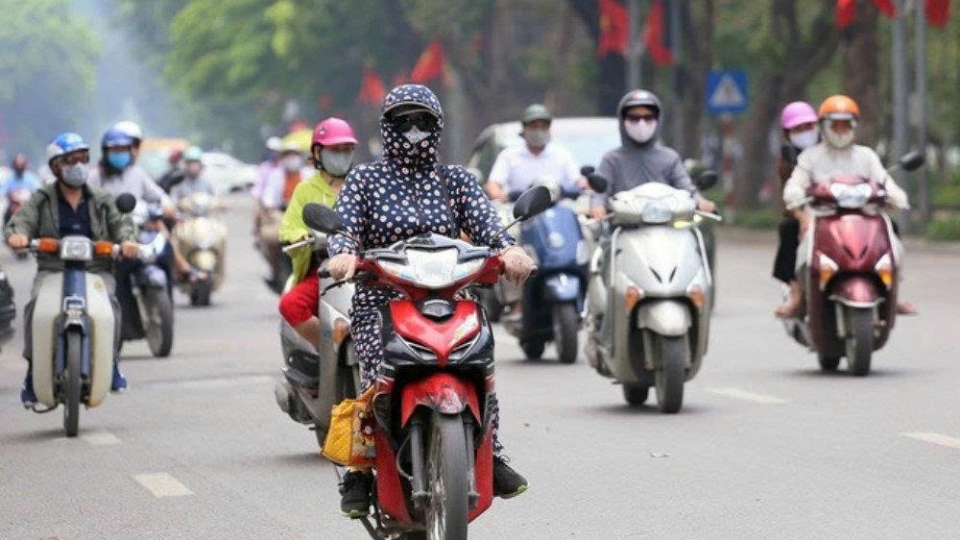Heatwave bakes Northern and Central Vietnam, temperatures near 40°C
VOV.VN - Northern and Central Vietnam are enduring a widespread and intense heatwave, fuelled by the strong development of a western low-pressure heat zone, with temperatures in many areas soaring close to 40°C.

Statistics show in the North on August 3, recorded temperatures reached 39.7°C in Phu Tho province, 39.5°C in Hanoi city, and 39.3°C in Ha Nam province.
The Central region also faced blistering heat, with temperatures ranging from 38°C to over 39°C. Specifically, Dak Lak province recorded 39.3°C, Nghe An 38.6°C, and Gia Lai 38.8°C.
Meteorologists analyse the actual temperature people feel outdoors can differ significantly from the forecasted air temperature, often by 2 to 4°C, or even more. This variation is largely influenced by surface conditions such as concrete, asphalt, or paved roads, which absorb and radiate heat intensely.
By late afternoon and early evening, the sense of suffocation becomes especially pronounced, even when indoors with air conditioning running. Heat retained by buildings and urban infrastructure continues to radiate, making it feel much hotter and more uncomfortable than what the thermometer may show.
According to the Northern Regional Hydrometeorological Centre, the main cause of this heatwave is the intensifying and expanding western low-pressure heat zone, a typical summer weather pattern that forms in southwestern China, Myanmar, Thailand, Laos, and India. As it extends toward Vietnam, this system brings hot, dry air and triggers the foehn effect, pushing temperatures up and humidity down.
Additionally, a high-altitude divergence field is creating an invisible "heat dome" that compresses the air downward, increasing surface temperatures while preventing cloud formation. As a result, skies remain clear and the sun blazes, intensifying the heat and discomfort.
Meteorologists say the heat is likely to persist in the North until the end of August 4. Thunderstorms are expected later that evening in the northern mountainous and midland areas, which will help cool things down.
However, the North-central region continues to be affected by hot, dry winds descending from the Truong Son Mountain ranges, and heat in this area, along with the central region, is expected to persist for several more days.




